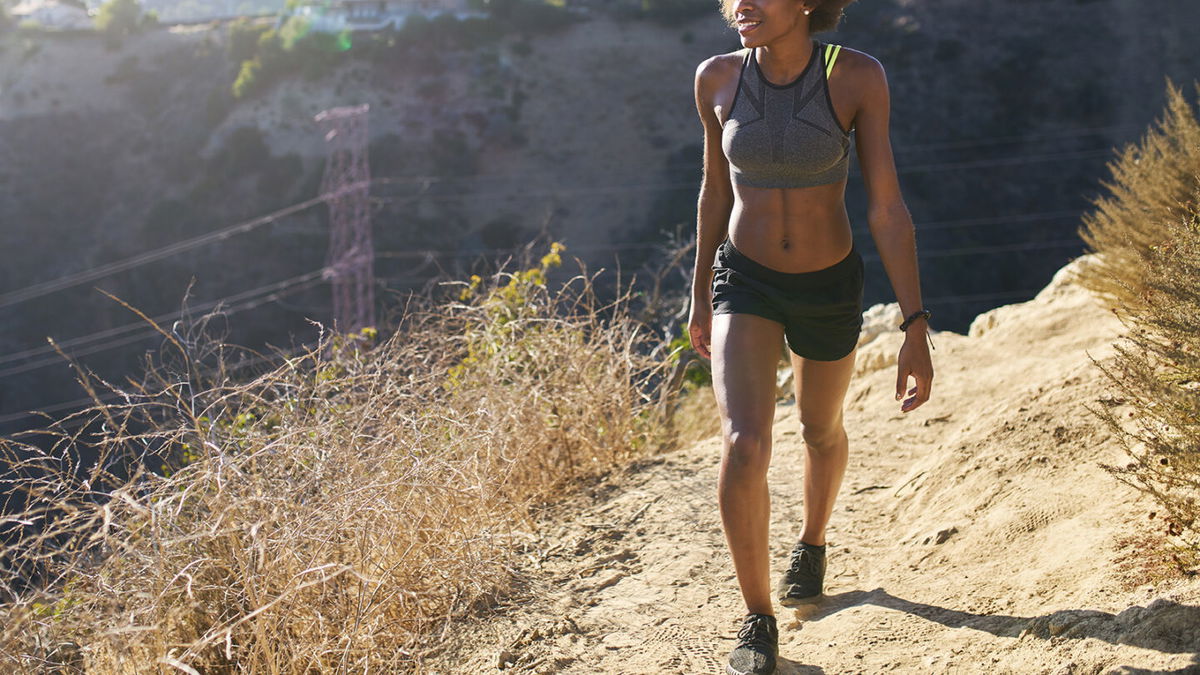Here are low-impact exercises that may ease your arthritis pain

Walking makes a great low-impact exercise to help manage your arthritis pain and symptoms.
By Melanie Radzicki McManus, CNN
Feeling lucky that you don’t have arthritis? Don’t celebrate just yet. Nearly one-quarter of adults in the United States has arthritis, or about 58.5 million people, according to the US Centers for Disease Control and Prevention.
More than half of these folks are 18 to 64 years old and in the prime of their working years, making this disease especially devastating. The financial toll from such pervasive arthritis: more than $300 billion in lost earnings and medical care each year, the CDC says.
There are dozens of different types of arthritis and related diseases, but the most common are osteoarthritis, rheumatoid arthritis, psoriatic arthritis, gout and lupus. All can cause joint stiffness, pain and swelling. Rheumatoid arthritis and lupus can also affect multiple organs.
Low-impact exercise is one of the most important ways to manage arthritis pain and symptoms, according to the Osteoarthritis Action Alliance, the CDC and other groups. This type of routine activity is effective and accessible, and it’s never too late to start.
Walking, biking and swimming are often listed as great low-impact exercises for people with arthritis. “I often recommend water therapy if you have access to a pool,” said Dr. Elexander Atkinson, a family medicine physician with Novant Health in Charlotte, North Carolina. “Whether you’re walking, swimming or doing water aerobics, it’s my No. 1 recommendation.”
If you’re not a fan of the water, that’s fine. The best exercise for you is the one you enjoy doing the most, Atkinson said. Luckily, you have so many choices. In addition to walking, biking and water exercises, you can dance, garden, play shuffleboard or bocce ball, cross-country ski, or use elliptical machines. Exercise programs aimed more at flexibility, balance and strength are important, too. Think yoga, tai chi and Pilates.
Pilates is one of the most effective forms of exercise for arthritis and general injury rehabilitation, said Melissa Bentivoglio, cofounder and CEO of Frame Fitness in Miami,a platform that delivers Pilates workouts on a custom reformer machine.
“In Pilates, all movement stems from your core,” Bentivoglio said. “Even if you’re isolating your legs or arm muscles, you still use your central core muscles to initiate all movement, using the stability of these muscles to ensure the rest of the body stays in proper alignment. This helps prevent injury, protects your joints as you are executing each exercise, and improves strength, flexibility and balance.”
While Pilates can be done employing a mat or reformer, Bentivoglio said using the reformer keeps the entire body in proper alignment throughout the workout while also easing pressure on joints.
Unfortunately, a lot of arthritis patients balk at exercising, as they may find doing so initially painful, Atkinson said, especially if they haven’t been in the habit of working out.
“We give patients this idea that they need to walk 30 minutes a day, but that’s not fair to them if they haven’t been regularly exercising,” he said. “They need to build up to it by starting with five minutes of walking a day, then building up to 10, then 20 and then maybe adding in the gym. You should never just go full-on.”
But sometimes it’s the habitual exercisers who struggle the most with arthritis, as they may not want to give up a favorite sport or cut back on participation. Think the lifetime runner with osteoarthritis in the knee who balks at boxing up the running shoes.
“Those are some of the most challenging patients,” Atkinson said. “I don’t know if running on an osteoarthritic knee will lead to an earlier knee replacement, but their pain will keep getting worse, and it will limit their function so they can’t walk as well the next day.”
Paying attention to how you feel during and after a particular exercise will tell you whether it’s good for your body or if you’ve overdone things, experts said. If your arthritic symptoms increase after exercise, modify or change your activity but try to stay in motion.
Be aware, too, that if you’re starting a new physical activity, it’s normal to have some pain, stiffness and swelling afterward. It could take six to eight weeks before your body acclimates, according to the CDC. Once it does, however, you should enjoy some measure of long-term pain relief.
“In Pilates, we often quote the founder of the practice, Joseph Pilates, who said, ‘In 10 sessions you will feel better, in 20 you will look better and in 30 you will have a whole new body,'” Bentivoglio said.
It’s also important to select an exercise that fits your goals. If arthritis is hampering your flexibility, strength and balance, try yoga, Pilates or tai chi, all of which focus on those issues. If you’re having trouble tackling stairs, you may be best off doing exercises to strengthen your quadriceps. To deal with overall stiffness and pain, opt for walking, cycling or swimming.
Don’t assume you’re cleared to hang out on the couch if you’re free of arthritis or have a mild case that causes little pain or dysfunction. “Exercise will potentially prevent or delay arthritis,” Atkinson said. “If you’re not active and exercising, you should be.”
The-CNN-Wire
™ & © 2023 Cable News Network, Inc., a Warner Bros. Discovery Company. All rights reserved.
Melanie Radzicki McManus is a freelance writer who specializes in hiking, travel and fitness. Sign up for CNN’s Fitness, But Better newsletter series. Our seven-part guide will help you ease into a healthy routine, backed by experts.